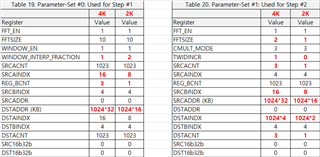Tool/software:
Dear TEXAS INSTRUMENTS
This is a follow-up question related to the URL below:
I am currently working on implementing a 4K FFT using the high_accuracy_xwrl14xx project, referencing the document below:
I have a question regarding the numOfAdcSamples parameter.
In order to implement a 4K FFT with the high_accuracy_xwrl14xx project, should the numOfAdcSamples value be set to 1024 or 4096?
I would appreciate your technical support and clarification on this matter.
Thank you.


